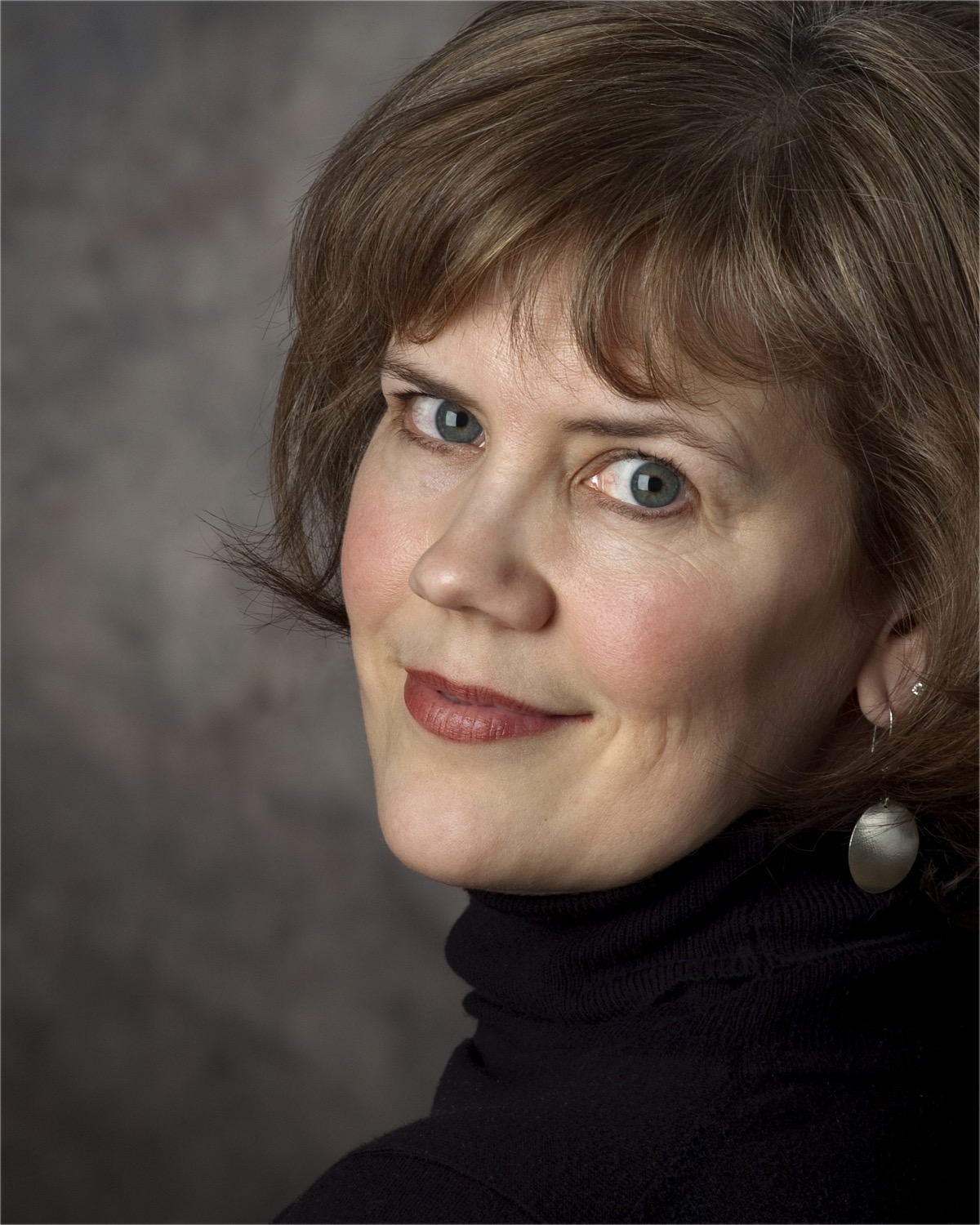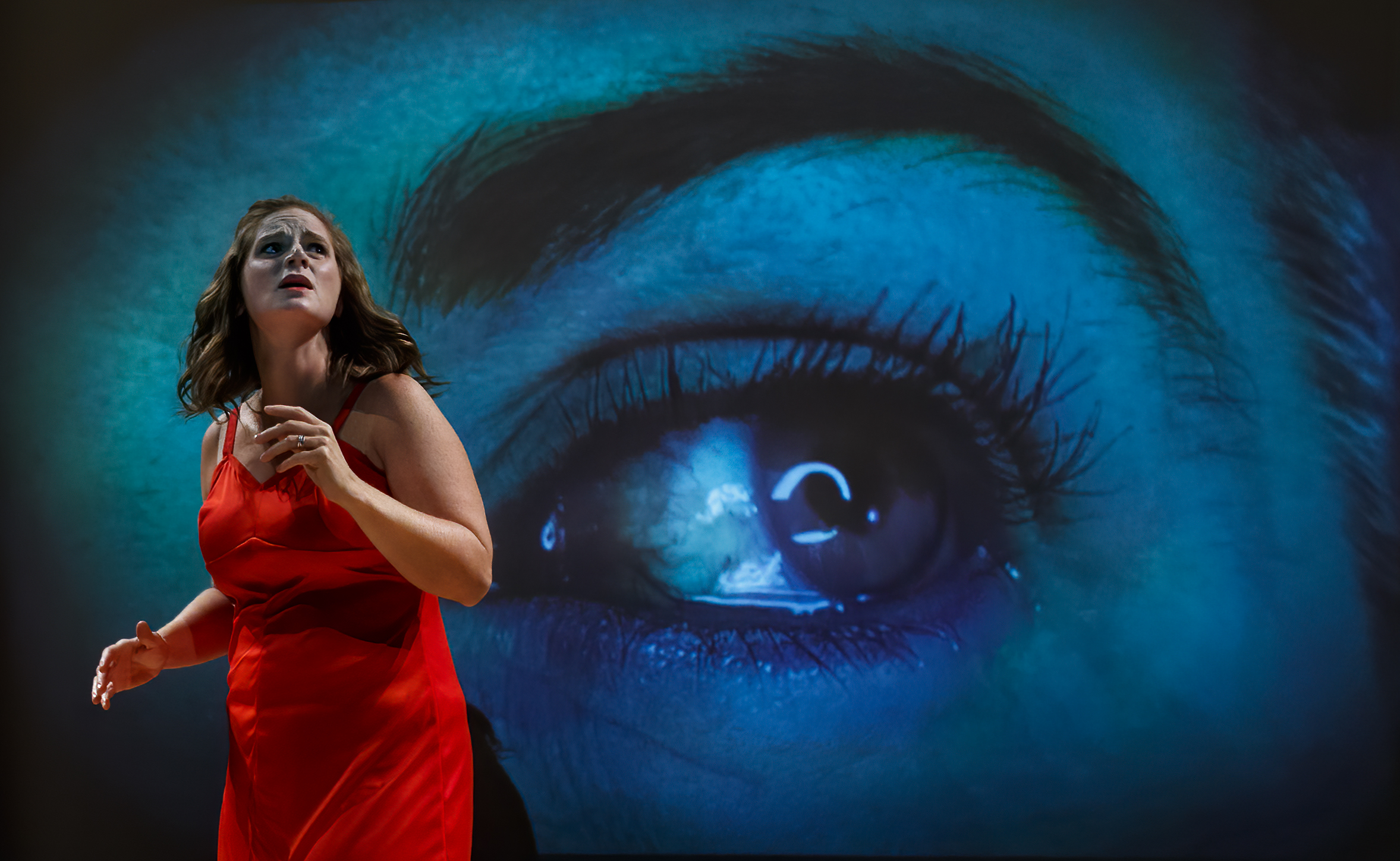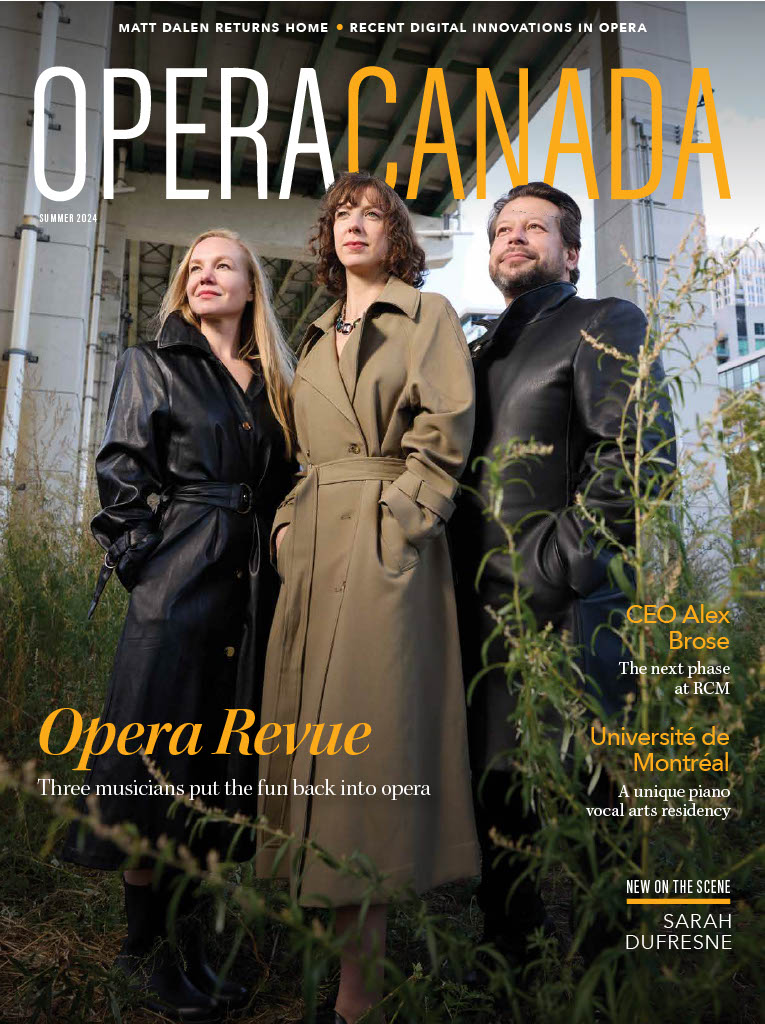There’s irony in the fact that one of the last public sightings of Manitoba Underground Opera (MUO) in the pre-pandemic, “Before Times” proved to be its concert recital, Lost Voices, included with its August 2019 summer festival titled Reflections of Ourselves.
Those long gone, albeit not forgotten, Covid-19 silenced voices have now happily been found two years later, with the plucky troupe first established in 2008 by Moose Jaw, SK-born general manager/conductor Brendan McKeen with Artistic Director Brenna Corner re-surfacing this year with MUO’s latest season, To Have and to Hold, inspired by weddings and ties that bind.
MUO’s decidedly more compact season, originally slated for August 2020, featured three operas presented over three nights from August 25 – 27, as well as a pre-recorded filmed recital, A Place of Healing. The latter featured local singers Sydney Clarke, Julia Davis, Nicki Legrand, Karen Santos and Kinnon Weddall with collaborative pianist Kimberley-Ann Bartczak in a series of classical aria and opera hits, interwoven with inspiring interviews that shone a spotlight on Winnipeg’s Willow Place that supports victims of domestic abuse and family violence – tragically on the rise during the global pandemic.
Svadba & Bluebeard’s Castle
The first program seen August 25th juxtaposed the Manitoba premiere of Serbian-Canadian composer Ana Sokolović’s brilliant chamber opera Svadba, (“wedding” in Serbian) with Bartók’s 1911 thriller Bluebeard’s Castle based on a libretto by Hungarian poet Balázs Béla, at first blush arguably strange bedfellows for a double bill, however, ultimately wed as one seamless production thanks to stage director Sarah Jane Pelzer’s overarching concept and strong visual cues serving as leitmotivs.
Sokolović’s tour-de-force ensemble piece originally scored for six (mostly) a cappella female singers combusts ancient Balkan folkloric rituals with a contemporary sonic idiom. It was premiered by Toronto’s now defunct Queen of Puddings Music Theatre in July 2011, and notably directed by Winnipeg-born director Michael Cavanagh, newly minted Artistic Director for the Royal Swedish Opera who formally began his tenure there this month.
MUO’s all-female ensemble was comprised of Jayne Hammond (bride-to-be Milica), Janice Marple (Danica), Katherine Mayba (Lena), Karen Santos (Zora), Kathleen Murphy (Nada), and Melanie Nicol (Ljubica) as Milica’s pink-clad bridal party and best gal pals on the eve of her wedding.
Normally, they would all be “live” together on stage, however, due to ongoing COVID-19 related health and safety protocols, all singers were individually pre-recorded using an audio clicktrack in the safety of their homes, guided by music director Bartczak. The filmed excerpts were meticulously knitted together into a digital pastiche that became equal parts compelling music video. The highly imagistic celebration of female bonding, with its stream of playful, bawdy, and often searingly poignant moments still managed to leap off the large upstage projection screen in Winnipeg Art Gallery’s Muriel Richardson Auditorium with all the hijinks energy of a late night pajama party.

Dawn Bruch-Wiens (Judith) live and on screen in MUO’s Svadba & Bluebeard’s Castle. Photo: Paul McKeen
However, this is still live performance with a (masked) in-house audience, and Pelzer’s added meta-layering featured an early appearance of Judith, Bluebeard’s new bride, performed by the evening’s sole “live” performer, Winnipeg soprano Dawn Bruch-Wiens, now seeming to rue her own marriage as though in flashback during Svadba.
This linking of the operas through their bridal protagonists, albeit confusing at first, became a masterclass in subtext, often shuddering with profound ambivalence and regret. Judith was seen slumped over her chair after donning her wedding gown, as the others gaily serenaded her from the screen. Or near the end, looking resigned amidst Sokolović’s propulsive score driven by pungent dissonances, percussive effects, rhythmic ostinato figures, Serbian text and gutteral, nonsense syllables. As Hammond delivers her final, mesmerizing aria from the screen, ringing as an ode to her evaporating singlehood, the chorus of women’s voices rise behind her as though a keening wail for the dead.
Bruch-Wiens’s impressive performance deserves special mention. First pantomiming and gesturally playing off the filmed singers during Svadba before steeling herself for Bartók’s knotty, inordinately difficult score during the second half, this compelling singing-actress is clearly one whom we haven’t seen in principal roles as often as we should. Her spot-on intonation, matched by dramatic intensity and flawless breath control enthralled. There were some pesky balance issues with onstage collaborative pianist/keyboardist Shannon Hiebert overlaid with Bartczak’s recorded piano, the two instruments helping bring clarity to Bartók’s original, densely packed orchestration.
It’s presumed that sound levels, likely set for the originally planned WAG rooftop sculpture garden locale complete with a reflecting pool (a promising doppelganger for the show’s penultimate reveal, i.e. the “shiny, silvery lake of tears”) were not re-calibrated for the weather-proof auditorium to which the show had to move shortly before curtain due to inclement weather.

L-R: Ian Fundytus (Bluebeard) on screen with Dawn Bruch-Wiens (Judith) in MUO’s Svadba & Bluebeard’s Castle. Photo: Paul McKeen
Despite Bruch-Wiens’s strong conviction and Vancouver bass-baritone Ian Fundytus’ bloodchilling performance as a digital Bluebeard who boomed, loomed and lorded power over his new bride, previously recorded, from the screen, the problem is that this thriller that unfolds as a series of seven chambers of horrors (in this case, the second, “armory” door was cut for brevity) is fueled by the magnetic relationship between Judith and Bluebeard. Greater interaction between the two characters, live and digital, would have further heightened the power of that relationship, and packed an even greater emotional punch. This inherent disconnect might have been mitigated by the reflecting pool had the show been staged on the rooftop. After all, this is still a marriage in all its expressionistic glory, with this second Manitoba premiere nevertheless offering a darker, deadlier underbelly and foil to Sokolović’s joyous rite of passage.

Lizzy Hoyt (Béatrice) on screen in the province’s first ever drive-in opera, MUO’s Béatrice et Bénédict. Photo: Paul McKeen
Béatrice et Bénédict
MUO is known for its thirst for adventure, including staging the only opera (to date) at Manitoba’s Legislative Building, with its groundbreaking 2014 production of Mozart’s Così fan tutte. It can now proudly lay claim to presenting the province’s first ever drive-in opera concert held in the car-friendly, spacious parking lot of Lower Fort Garry (albeit not fully exploited and itself becoming a bit player of the evening), a national historic site situated approximately 40 kilometres north of Winnipeg.
Berlioz’ Béatrice et Bénédict (seen August 26, sung in French with subtitles projected onto two enormous LED screens flanking the pop-up proscenium stage), stage directed from Corner’s Atlanta, Georgia home via the power of Zoom, featured a well-balanced seven-member cast, including mezzo-soprano Lizzy Hoyt and tenor James McLennan in the title roles. The 80-minute edited show (no intermission), with dramaturgy by Corner and based on Fraser Lyric Opera’s prior production that she also directed in 2015, smoothed over the absence of a Covid-19 risky chorus with spoken English dialogue inspired by Shakespeare’s comic masterpiece, Much Ado about Nothing.
Listeners peered through windshields, with a live six-piece orchestra, artfully led by Michelle Mourre bringing Berlioz’ score to life through our FM radios, à la retro drive in movie theatres. Several younger audience members were spotted curled up in open hatchback car trunks, munching popcorn available at the concession stand, truly making this Manitoba’s first bonafide opera tailgate party.
The charismatic Weddall crafted a sparkling bride-to-be Héro as she delivered one of the show’s early highlights, “Je vais le voir.” Her radiant soprano voice underscored by an effortless top range elicited the first round of boisterous car honks that seemingly grew louder with each passing aria in lieu of applause.
Not to be outdone, McLennan delivered a compelling “Ah! Je vais l’aimer” as well as earlier sparring with Weddall during their duet “Comment le dédain pourrait-il mourir?” while also holding his own during each of his ensemble numbers.

L-R: Raymond Sokalski (Léonato) with Jean van der Merwe (Claudio), Matthew Pauls (Don Pedro) and Lizzy Hoyt (Béatrice) in MUO’s Béatrice et Bénédict. Photo: Paul McKeen
Tenor Raymond Sokalski provided requisite gravitas with his dignified Governor of Messina, Léonato, joined by fellow plot-drivers, baritone Jean van der Merwe as Claudio, and bass Matthew Pauls’ Don Pedro, who schemes to ultimately bring the two principal, quarreling lovebirds together in a final double marriage including Héro and her betrothed, Claudio.
The most enchanting moment came during the tender Act I closing nocturne “Vous soupirez, madame?” sung by Héro and her lady-in-waiting Ursule (Nicki Kirton) after (by then) sunset under a twinkling night sky, with prairie breezes, as if on cue, blowing against Kirton’s floral dress while she sang of the wind. This proved, 24 months after MUO’s last festival, that the magic of opera, and these “lost voices” are still very much alive and still able to cast a spell despite these most unusual times.
More information about Manitoba Underground Opera can be found here.
Opera Canada depends on the generous contributions of its supporters to bring readers outstanding, in-depth coverage of opera in Canada and beyond. Please consider subscribing or donating today.

Holly Harris has served as an opera, classical music, dance and theatre critic for over 20 years, including having written for Opera Canada since 2009. A Prairie girl at heart, her reviews and articles have also appeared in the Winnipeg Free Press, Ludwig van Toronto, Musicworks, Opera Today, Classical Voice North America, Dance International, The Dance Current, Symphony, and The Strad.












